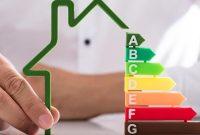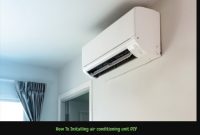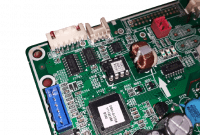AC Not Blowing Cold Air After Power Outage

There are some common problems that occur with the air conditioner after a power outage
- Tripped Breaker
- Leak Capacitor
- Failed Compressor
- Thermostat Not Working
So, if your air conditioner won’t turn on, try the following steps:
Once the power comes on after an outage, you expect your air conditioning system to fire back up as normal. However, power outages can cause issues that stand in the way of home comfort, namely an AC not blowing cold air.
If you discover warm air coming from your vents as the cooling system runs after a power outage, these are the most common sources of the problem:
Air Conditioning Not Working After Power Outage: Tripped Breaker
Your central air conditioning system’s indoor and outdoor components are each powered by their own circuit breakers. The breaker trips to shut off the circuit when surge happens, which is likely before a storm’s power outage.
Because each component of the system has its own breaker, it’s possible that one has tripped while the other hasn’t. If the breaker for the outside air conditioning components trips but the breaker for the indoor air conditioning components does not, there will be no cold air.
This is because the outdoor equipment that is integral to the cooling process is not running, but your indoor components that facilitate air circulation are. The air handler indoors is still powered, so the blower fan pushes air through the ducts – it’s just not cooled.
If your air conditioning system is not blowing cool air following a power outage, go to your home’ electrical panel and look for the circuits which power your cooling system components. Find the circuit breaker marked condenser or outdoor air conditioner and see if it is tripped.
If this is the case, reset the circuit breaker and turn on the air conditioner. If the breaker trips again right away, don’t try to reset it; instead, contact for air conditioning repair.
Air Conditioning Not Working After Power Outage: Failed Capacitor
Air conditioners use a capacitor to start up the system’s compressor. Power outage surges can cause the capacitor to fail. If the capacitor blows during a power outage, the compressor will not come back on once power is restored. Therefore, the outdoor unit does not work to perform heat exchange, yet the indoor unit operates normally.
Because of this, your air conditioner isn’t blowing cool air because the heat exchange process is not completed with the cooling cycle.
You can visually assess the capacitor’s condition by looking into the outdoor unit – it looks like a canister on top of the compressor. The top usually bulges or leaks an oily liquid if the capacitor has blown. This issue needs to be repaired by a trained HVAC technician.
Air Conditioning Not Working After Power Outage: Failed Compressor
A power surge can also cause the air conditioner’s compressor to fail. When the compressor fails, there is no heat exchange, resulting in no cold air. This is because the compressor is not circulating refrigerant through the system, extracting warm air.
Your trusted HVAC technician is able to assess the compressor and inform you if yours has been damaged by the power outage. If the compressor has failed, a compressor replacement is needed to restore system function.
How to Resetting Your Air Conditioner
Follow this step to resetting air conditioner after power outage happens
1# Turn The Thermostat to “Off”

Setting your thermostat to off will allow it to stop “asking” the AC for cooling until you are able to reset both the internal and external breakers. Some thermostats are battery operated, and the problem could be solved by a quick change in batteries. See which thermostat you have and work from there. If you don’t have a battery operated thermostat, follow the next steps of instruction.
2# Reset The Breaker
Most likely, a power surge from the storm overloaded your air conditioning’s circuit, causing the circuit breaker to “trip.” In this case, it needs to be reset.
Typically located in your garage, laundry room, basement, or exterior part of your home, find the circuit breaker box and locate the “air conditioning/HVAC label”.
If you can’t find the label, look for the switch that is standing in a neutral position, meaning it’s neither “on” nor “off”. Turn the switch to the “off” position (right), and simply flip it back over to the “on” position (left).
3# Wait 30 Minutes
Your AC needs some time to reset its internal circuit breaker after a power outage. It may seem like an eternity at the time of the event, but during the 30 minute trial, the internal breaker in your air conditioner is trying to reset.
Because the internal breaker cannot reset while the thermostat is calling for cooling, it’s critical to maintain the thermostat in the “off” position during this period.
4# Turn The Thermostat to “Cool”
After you’ve waited the allocated time, turn the thermostat back to “cool,” and it should kick your air conditioning back on. Be sure the temperature setting is at least 5 degrees below the room temperature so the thermostat can call for cooling from your AC unit.
5# Call A Service Provider
If doing this didn’t help, you may have a bigger problem at your hands. It’s best to figure this out as soon as possible, so you can get a technician out at the earliest time.
The problem may be deeper and more dangerous than what you believe, and in times like that, it’s always best to leave the handy work to the professionals.
Best Advice From Local Repair Experts On How To Deal With A Power Outage

After the power outage above mentioned steps should usually start your air conditioner but if your air conditioner keeps on tripping the breaker then it indicates different problems.
Call your local air conditioner repair company to fix the issue with your ac. Reasons why your air conditioner keeps on tripping the breaker:
Dirty Filters Or Clogged Obstruct Airflow
This puts your system under unnecessary strain, causing it to work harder to achieve the desired temperature. This causes your air conditioner to overheat, causing the breaker to trip. Filters that are dirty are also hazardous to one’s health.
Molds, mildew, and bacteria thrive in the dirt and particles that accumulate in the air filters. Mold spores then spread throughout the house via the air flowing from the air conditioner, causing respiratory illnesses such as asthma and allergies in the residents.
Low refrigerant level
With a low level of refrigerant, your air conditioner has to work very hard which again results in the overheating. You will need air conditioner service to recharge your ac and to detect the leak.
Condenser Coil Fan Problems
This fan is located in outside unit. Sometimes this stops working so it fails to cool the coil properly.
Dirty Condenser Coils
The exterior unit houses the condenser coils. As a result, it collects more dirt and debris. It functions to remove the heat received by the refrigerant from your home. When these coils become clogged with dirt, leaves, and debris, they are unable to efficiently dissipate heat.
The air conditioner has to work harder as a result of this. Condenser coils are covered with dirt after storms. You can clean it yourself or hire a local air conditioner repair company to handle the job.


